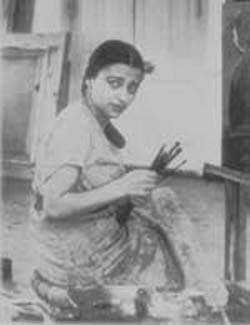Amrita Sher-Gil is probably the most significant 20th century painter who heralded the changing direction of modern Indian art1 . Of Indo-Hungarian origin, Sher-Gil’s short life (she died at the age of 28) was intense, exotic and amazingly productive. Her best known works were painted within a short span of just over a decade – a period in which her style evolved as a result of changing influences and experimentation. Yashodhara Dalmia’s meticulously researched biography situates Sher-Gil’s life within a dramatically unfolding history that encompasses a family, two continents, and the vicissitudes of changing artistic currents that shaped this extraordinary young artist’s work. Biographies are by virtue of their genre exciting and perplexing. Poised as these are at the intersection of life, memory, history and sometimes even fiction, they create a problem for the biographer or historian. While the purpose of the biography is to focus on an individual’s life rendering it special and unique, the historian’s engagement with the individual is often via the filter of society and wider categories like class, race, region or gender which may illuminate certain conditions that enable the existence of such a life.
October 2006, volume 30, No 10

